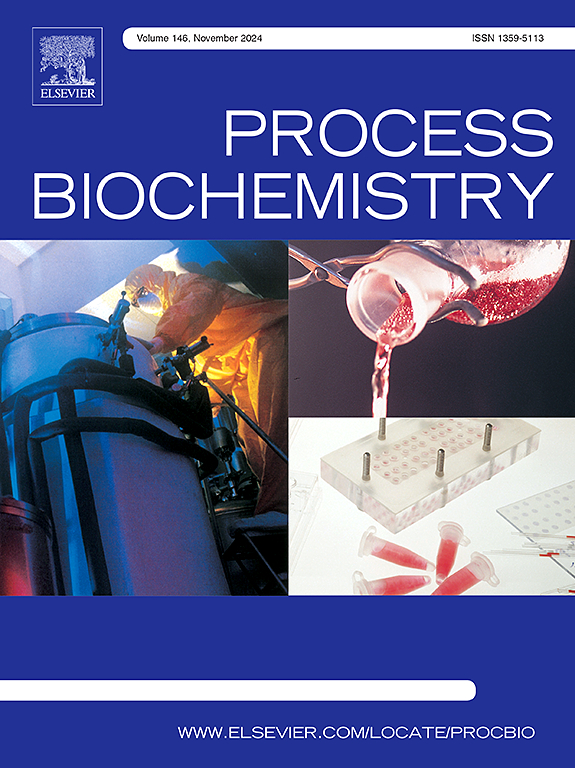非贵重双金属氧化物对二氧化碳生物电化学还原为挥发性脂肪酸的影响
IF 4
3区 生物学
Q2 BIOCHEMISTRY & MOLECULAR BIOLOGY
引用次数: 0
摘要
通过微生物电合成(MES)将二氧化碳转化为增值化学品为高价值化学品的可持续生产提供了一条有前途的途径。该研究评估了五种双金属氧化物(feco, FeSnO, SnCuO, MnCuO和CoMnO)对能够利用CO2的混合微生物培养的影响。FeSnO显著增强了丙酮生成和链延长活性,同时抑制了丙酮裂解产甲烷。当在MES电池中涂覆碳毡阴极时,FeSnO将CO₂转化效率提高到90% %以上,并使丁酸盐和己酸盐的产量分别达到566 mg (Lc d)−1和89 mg (Lc d)−1。丁酸盐的最大选择性为53 %,己酸盐的最大选择性为10 %,是未修饰阴极的4倍。电化学阻抗谱显示,FeSnO涂层将电荷转移电阻从209.4 Ω降低到0.9 Ω,同时促进了生物膜的形成。这些发现表明,FeSnO涂层不仅提高了电化学性能,而且促进了微生物链延伸,这对CO2成功转化为中链脂肪酸至关重要。本文章由计算机程序翻译,如有差异,请以英文原文为准。
Impact of non-noble bimetallic oxides on bioelectrochemical reduction of carbon dioxide to volatile fatty acids
The conversion of CO2 into value-added chemicals via microbial electrosynthesis (MES) offers a promising route for sustainable production of high-value chemicals. The study evaluates five bimetallic oxides (FeCuO, FeSnO, SnCuO, MnCuO, and CoMnO) for their impact on mixed microbial cultures capable of CO2 utilization. FeSnO significantly enhanced acetogenic and chain-elongating activity while suppressing acetoclastic methanogenesis. When used to coat carbon felt cathodes in MES cells, FeSnO increased CO₂ conversion efficiency to over 90 %, and enabled the production of butyrate and caproate at rates up to 566 mg (Lc d)−1 and 89 mg (Lc d)−1, respectively. Maximum product selectivity reached 53 % for butyrate and 10 % for caproate, surpassing by 4-fold those achieved with unmodified cathodes. Electrochemical impedance spectroscopy revealed that FeSnO coatings decreased charge transfer resistance from 209.4 Ω to 0.9 Ω, while promoting biofilm formation. These findings suggest that FeSnO coating not only enhances electrochemical performance but also facilitates microbial chain elongation critical for successful CO2 conversion to medium-chain fatty acids.
求助全文
通过发布文献求助,成功后即可免费获取论文全文。
去求助
来源期刊

Process Biochemistry
生物-工程:化工
CiteScore
8.30
自引率
4.50%
发文量
374
审稿时长
53 days
期刊介绍:
Process Biochemistry is an application-orientated research journal devoted to reporting advances with originality and novelty, in the science and technology of the processes involving bioactive molecules and living organisms. These processes concern the production of useful metabolites or materials, or the removal of toxic compounds using tools and methods of current biology and engineering. Its main areas of interest include novel bioprocesses and enabling technologies (such as nanobiotechnology, tissue engineering, directed evolution, metabolic engineering, systems biology, and synthetic biology) applicable in food (nutraceutical), healthcare (medical, pharmaceutical, cosmetic), energy (biofuels), environmental, and biorefinery industries and their underlying biological and engineering principles.
 求助内容:
求助内容: 应助结果提醒方式:
应助结果提醒方式:


